15 years after a man died in the Nutty Putty Cave, his family and rescuers still struggle to escape the darkness
Published 5:30 pm Monday, November 25, 2024
15 years after a man died in the Nutty Putty Cave, his family and rescuers still struggle to escape the darkness
When Emily Sanchez first visited her husband’s unconventional tomb, lush green ferns and moss created an oasis there amid the gray limestone debris and the brown patches of scraggly broom snakeweed that dominate the parched hills west of Utah Lake.
The verdant plants thrived on the humid air flowing up from the black depths of the cave, where minerals, deposited by hydrothermal water, had created deep pockets and tunnels.
There, at the mouth of Nutty Putty Cave, Sanchez found peace and pain.
John Jones remains inside, entombed in the cave where he died on Nov. 25, 2009. But he isn’t the only one still ensnared by it.
As The Salt Lake Tribune reports, family and friends remain tethered to the horror that unfolded in its dank, sinuous passages. Dispirited rescuers pay their respects at the mouth, searching for some scrap of closure. And that’s not to mention the millions of people worldwide who, from behind the safety of their TV and laptop screens, journey to the cave on a daily basis and revisit the chill-inducing details behind John’s death.
Fifteen years later, this is what they’ve found, and what they’re still searching for.
![]()
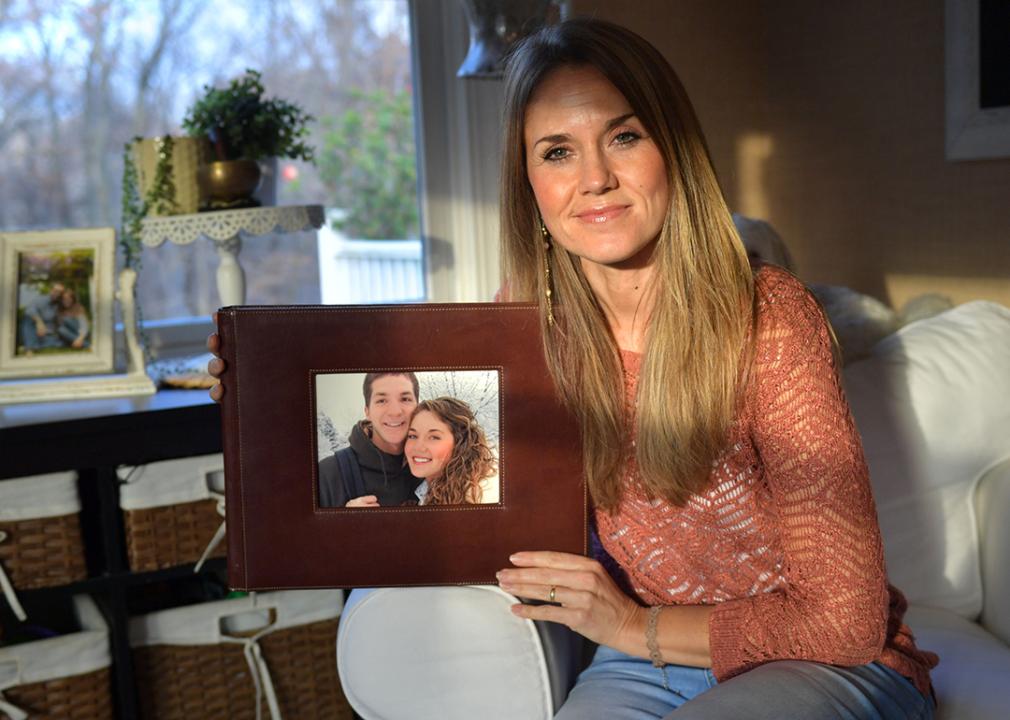
Ron Johnson // Special to The Salt Lake Tribune
A family experience
It was Josh Jones’ idea to go to Nutty Putty.
He’d been exploring more technical caves with his Utah State University roommate, Joey Stocking. But Nutty Putty Cave, which opened into a big room before stretching into increasingly narrow fingers, was something the whole family could experience.
The two youngest of the seven Jones kids from Stansbury Park, Utah, John, 26, and Josh, 23, split off to seek out more remote areas. When John didn’t return, Josh went looking for him.
Immediately upon finding his brother, his 6-foot, 200-pound frame squeezed through a window the size of a medium flower pot, one arm trapped behind him and the other pinned to his side, Josh felt his stomach turn. He grabbed hold of his brother’s ankles and yanked. John didn’t move.
Josh’s hands began to shake.
“There was this, ‘I’m not getting him out,'” he said. “‘I don’t know how anyone is getting him out.'”
As they waited for rescuers to arrive, they prayed together—John had always been a devout Latter-day Saint, and Josh had always idolized John. At the end of the prayers, though, Josh could hear his own voice waiver and crack.
To his dismay, John began to comfort him, telling Josh it would be OK and to be good to his girlfriend.
“The way we spoke,” Josh said, “it felt like John knew what the score was.”
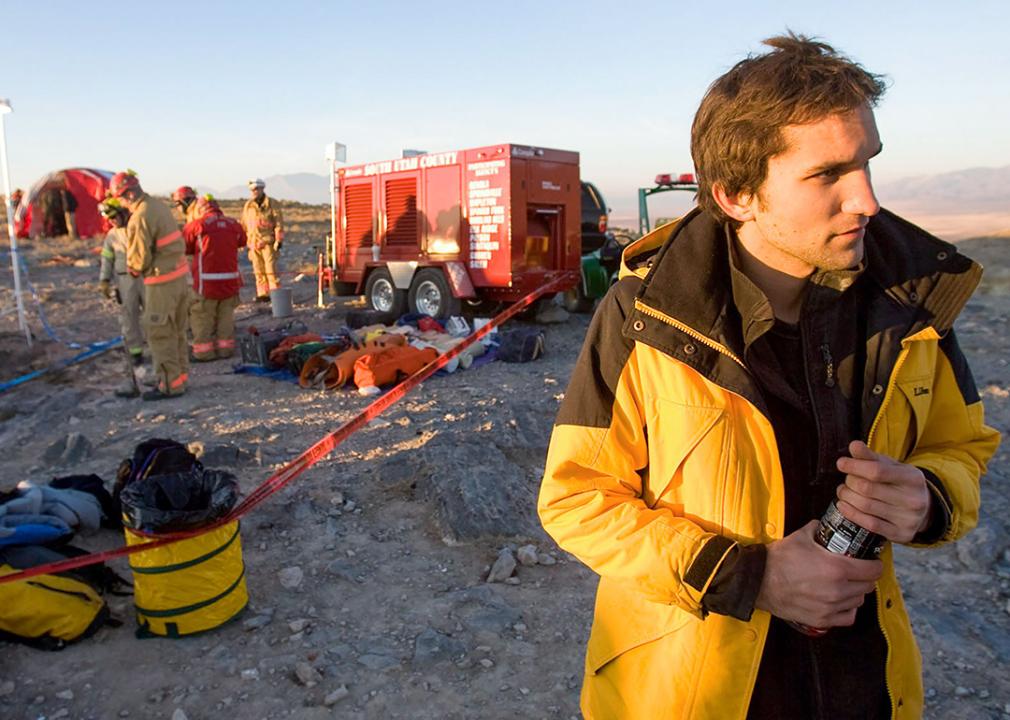
Al Hartmann // The Salt Lake Tribune
Racked with guilt
Still, after John’s death, Josh, pictured above, was racked with guilt.
Searching for penance, he committed himself to becoming more like John. That meant, in his mind, dedicating himself unwaveringly to the church and to his studies, just as John, a pre-med student, had done.
The problem with that plan was that he wasn’t John. And soon every decision he considered not pious, or a lapse in judgment, every contrary thought brought him even more guilt, more shame, more depression.
Night terrors crept in, as did other signs of post-traumatic stress disorder, or PTSD. Sometimes, when he was driving alone, he would uncontrollably blurt out “I’m sorry” over and over and over again. He was spiraling.
“I’ve got these two major sources of shame. And one has got to go,” he said he realized. “… I saw myself plunging and it felt like life or death. It’s either make a decision or you’re going to … this is it.”
Unable to shake his shame over John’s death, he left the church.
He moved to San Diego, got a PTSD diagnosis, and began seeing a psychiatrist. About five sessions in, Josh had a breakthrough. He had never really cried over his brother’s death in the years since Nutty Putty. In this session, he sobbed. Then, he declared himself healed.
“It’s that pioneer, suck-it-up mindset,” he said. “‘OK, we cried once. Let’s move on.”
Now, however, Josh realizes his grief and depression were like their own cave, with fingers stretching deep into his psyche. He’d barely stepped inside the first room.
More than a decade later he would be diagnosed with Pots, a disease associated with chronic fatigue that, according to the National Institute of Health, is typically found in people with elevated levels of anxiety. Josh felt like he was headed for “another reckoning.”
Then, during the annual Jones brothers retreat in 2022, he and his brother Mike—who had also been in Nutty Putty Cave with John and Josh that fateful day—hiked to the top of a plateau outside of Sedona, Arizona. Mike led Josh through a breathwork session. Josh felt, he said, “split wide open.”
“It felt violent. It felt like an explosion,” he said. “And I sobbed just uncontrollably for about an hour with Mike. We sobbed together, and it was really cool. It was really a special moment.
“I felt really close to John. I felt like all this shame that I had been packing deep, deep, deep down started to come up. And it started to get replaced with actually being able to feel into that love that I had for John.”
Josh does not consider himself healed, but he’s working on it.
“I refuse to pretend that this all happened for a reason and that there’s a silver lining and there’s unicorns and rainbows at the end of the journey,” he said. “But it’s been, very honestly, really exciting for me to be able to start healing from this thing.”
Interestingly, a key step in his healing process has been for Josh to center less of his identity as being John’s brother. For years, he relished the attention he got from the public narrative around the events at Nutty Putty Cave. That external validation of his victimhood gave him comfort, he said. It didn’t, however, allow him to move on.
“Looking inward instead of outward,” he wrote in an email, “has been the only source of real relief.”
Rescuing the rescuer
Before Nutty Putty, Joey Stocking didn’t know John.
They met that day at the cave. Josh, Stocking’s roommate at Utah State University, had invited him to join the Jones family outing. After John became stuck, Stocking took a shift keeping him company while Josh went to call for help. Stocking was also a member of The Church of Jesus Christ of Latter-day Saints, and together they sang church hymns and made small talk. John told him his “big secret:” that he came home to Utah from Virginia for Thanksgiving to tell his family that his wife Emily was pregnant.
“The whole time I was with him,” Stocking recalled, “I remember just feeling like, you know, rescuers will get here, and they’ll get him out.”
At exactly midnight the next night, long after he had returned home, Stocking got a text from Josh. John wasn’t getting out.
“No!”
Stocking screamed. With every ounce of life in his body, he screamed.
The week went by in a daze. At the funeral, he stayed in the back of the church, unable to convince himself this was reality. A few others took refuge there as well. Some he recognized as cavers and search-and-rescue volunteers, and he went up to thank them.
“You could just kind of see it in their eyes,” Stocking said, “that they needed to talk about it for their own healing.”
For more than an hour they talked about the rescue effort. Stocking found the conversation cathartic—and inspiring.
“I remember getting in the car afterward,” Stocking said, “and driving away and telling my wife that those are the coolest, most impressive people I’ve ever met.”
Someday, he told her, he was going to do that.
When Stocking moved to Garden City on the shore of Bear Lake two years later, he made good on his promise and volunteered for the local search-and-rescue squad. Within a decade, he’d gotten involved with every first responder agency in Rich County: fire, paramedics, Coast Guard auxiliary, dispatch for 911 and the secondary response group Bear Lake Responds. Stocking went out on so many emergency calls that his wife had to remind him he had a real, paying job to attend to.
Each call took him, in its own way, back to Nutty Putty Cave. Now, though, he could take action and make a difference. Helping was healing.
Except when it wasn’t.
Some of the horrors Stocking encountered while out on some of those rescues resulted in what he deems “microtraumas.” Over time, they began to break open the hairline crack in his mental health that Nutty Putty had first wrought.
He couldn’t sleep. He was angry and on edge, constantly checking his pager and worrying that if he let his guard down, he would be late to a call and something terrible would happen. Something he could prevent.
“It just got to the point I just couldn’t cope very well,” Stocking said, “and it was starting to affect my family.”
Four therapists later, Stocking stumbled upon a treatment called Eye Movement Desensitization and Reprocessing, or EMDR. Proponents say it helps with PTSD by simulating REM sleep while a person is thinking about a traumatic event.
During one session, Stocking focused on the trauma he found inside Nutty Putty Cave. It flipped his perspective.
“It’s somehow a step above healing from the trauma,” Stocking said. “It’s almost like I’ve been emboldened or something. It’s changed me in a way that I feel able to deal with other things.”
For instance, he said, he sees the good that came out of the ordeal. He knows people are alive today who wouldn’t be if he hadn’t become a search and rescue volunteer.
“I know that there’s a good handful of people that I truly helped,” he said, “and I guess that feels good.”
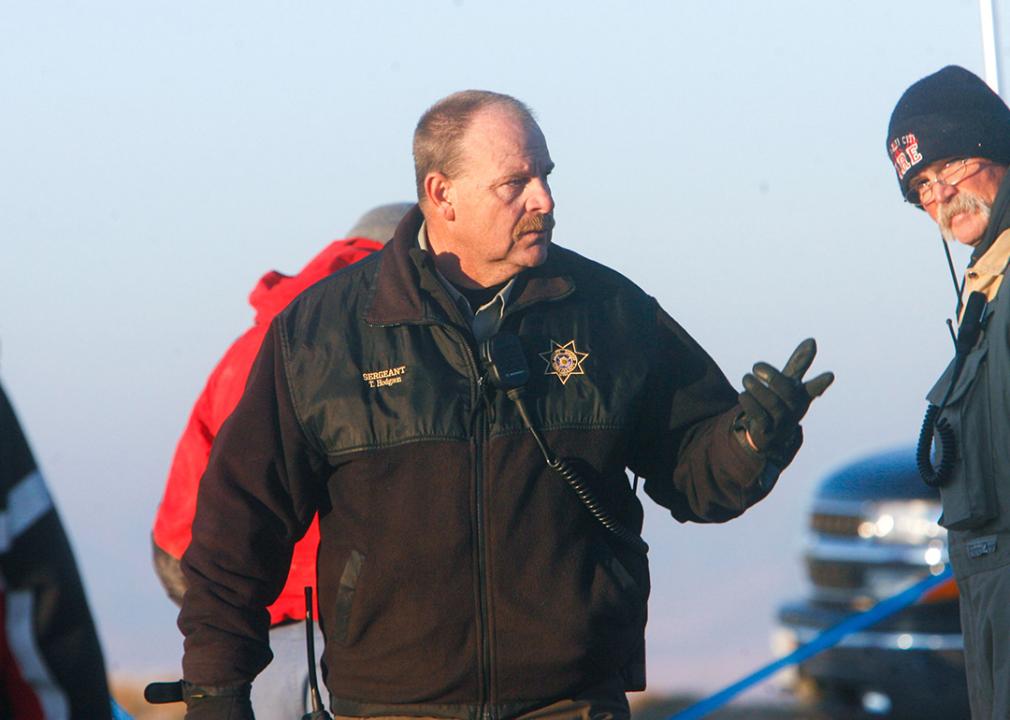
Al Hartmann // The Salt Lake Tribune
Searching for closure
Tom Hodgson, pictured above, thinks about Nutty Putty Cave more often than he would like, especially in retirement.
The former Utah County Sheriff’s lieutenant headed up Utah County Search and Rescue for more than 30 years before retiring in 2022. Yet he finds himself turning over the events of that Thanksgiving like a smooth stone in his pocket. He looks for cracks, things his team of 137 rescuers and cavers could have done differently.
“This,” he said, “was a very, very difficult call from the onset.”
Rescuers knew all along that they would likely fail. In almost any other circumstance, they could pipe in food and water and keep John alive until they could work out a way to extract him. But the body isn’t meant to be upside down for long.
“Being upside down, your body has to pump the blood out of the brain all the time,” Doug Murdock, the trauma physician on site, told The Salt Lake Tribune in 2010. “Your body isn’t set up to do that. The entire system starts to fail.”
Still, for 27 hours, they worked to get John free. Rescuers tried everything they could imagine: digging, chipping, lubricating with peanut oil. They squeezed a ball between his forehead and the cave wall so he could push with his head while they pulled with their hands and ropes on John’s ankles, the only part of him reachable through the narrow window.
Late in the effort, they’d rigged a cable through a set of 15 pulleys drilled into the limestone. It appeared to be John’s best chance at escape, and it moved him slightly. But then one of the holds broke loose under the tension. A carabiner slammed into the face of one of the cavers, who later had to undergo reconstructive surgery.
Ultimately, they couldn’t extract John, nor bring out his body. That’s why this rescue attempt, of at least five he oversaw at Nutty Putty Cave and the hundreds of others he coordinated across Utah County, gnaws at Hodgson. It’s still, he said, “at the top of my memories.”
He remembers that, in their time of greatest distress, the Jones family, like John, comforted the volunteers rather than the other way around. That’s something so rare, multiple rescuers said, that it’s not easily forgotten.
“Many of us felt like we didn’t give the family the closure that it obviously wanted,” Hodgson said. “We just felt like we left something unfinished.”
But there was one thing Hodgson felt he could do. He advocated, controversially, to permanently close the cave and allow John to rest in peace. It wasn’t his decision alone, but on Dec. 9, 2009, authorities collapsed the entrance to the cave with explosives and sealed it with concrete.
“I know I didn’t want to go through that again,” he said, “or have a family go through that again.”
Hodgson said he still goes out to the Nutty Putty Cave entrance on occasion. The family mounted a plaque memorializing John on what’s left of the cave entrance. Another honors the search-and-rescue workers who tried to save him. A rock ring, placed by rescuers and members of the Jones family, encircles the cave mouth.
“There’s definitely a heavy heart,” Hodgson said of visiting the cave, “but … there’s a sense of peace as well. Because I know John’s there. And when we were out there before, it was hectic and fast-paced and a lot of things going on at once and a lot of things unresolved.
“Now, when you go out there, it’s just you and John and the mountain.”
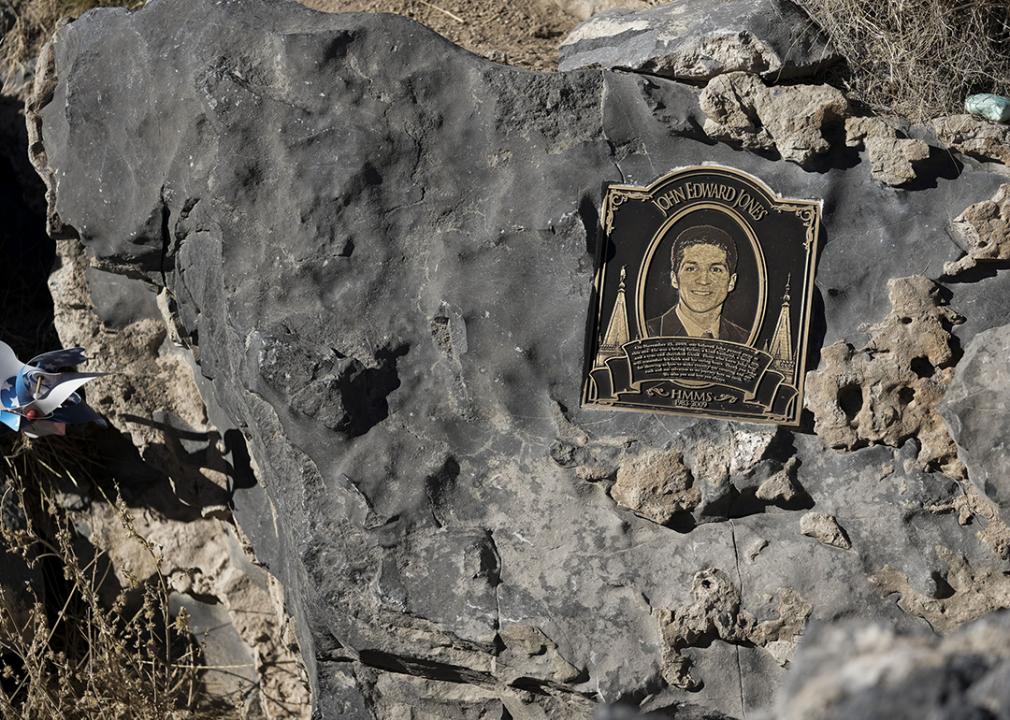
Bethany Baker // The Salt Lake Tribune
‘Everybody’s worst nightmare’
Brandon Kowallis was the last man to see John alive.
Kowallis, a caver who daylights as Salt Lake Community College’s concurrent enrollment director, got called out to Nutty Putty Cave at the 20th hour. The other cavers were injured or exhausted, and Kowallis, who helped map the cave, knew it better than almost anyone.
When he arrived, though, John was unresponsive. Without John’s help, Kowallis knew they couldn’t contort his legs around an overhang, which had to happen to free him. Kowallis then heard what he thought might be a final gasp. Unsure, he and rescuer Susie Motola toiled for several more hours to widen the opening, contorting their bodies to get leverage in the tight quarters and scooping debris out in their helmets. In two hours, they advanced 2 inches.
By then, John was dead.
Kowallis spent part of Thanksgiving Day writing a report for the search and rescue team detailing his efforts. It remained unpublished until this February. Then, having grown tired of answering the same questions in email after email from people who had stumbled upon, and become obsessed with, Nutty Putty Cave, he posted it on his blog.
The blog typically gets 80 to 100 hits a day, Kowallis said. After his Nutty Putty post, it began gaining thousands of clicks a day. And rather than satisfy the curiosity, it seemed to cultivate it. Every question he answered would be met with 10 more. Each sought more detail, more insight, as though the person on the other end was a detective trying to solve a mystery.
Kowallis calls the events at Nutty Putty Cave “everybody’s worst nightmare.”
One of the commenters on the blog said she moderates a subreddit dedicated to the cave rescue attempt. Another asked 11 detailed questions after noting, “I live in Europe, I dont [sic] do extreme sports, and I dont [sic] know anyone who takes up extreme sports, so I don’t have anyone else to ask.”
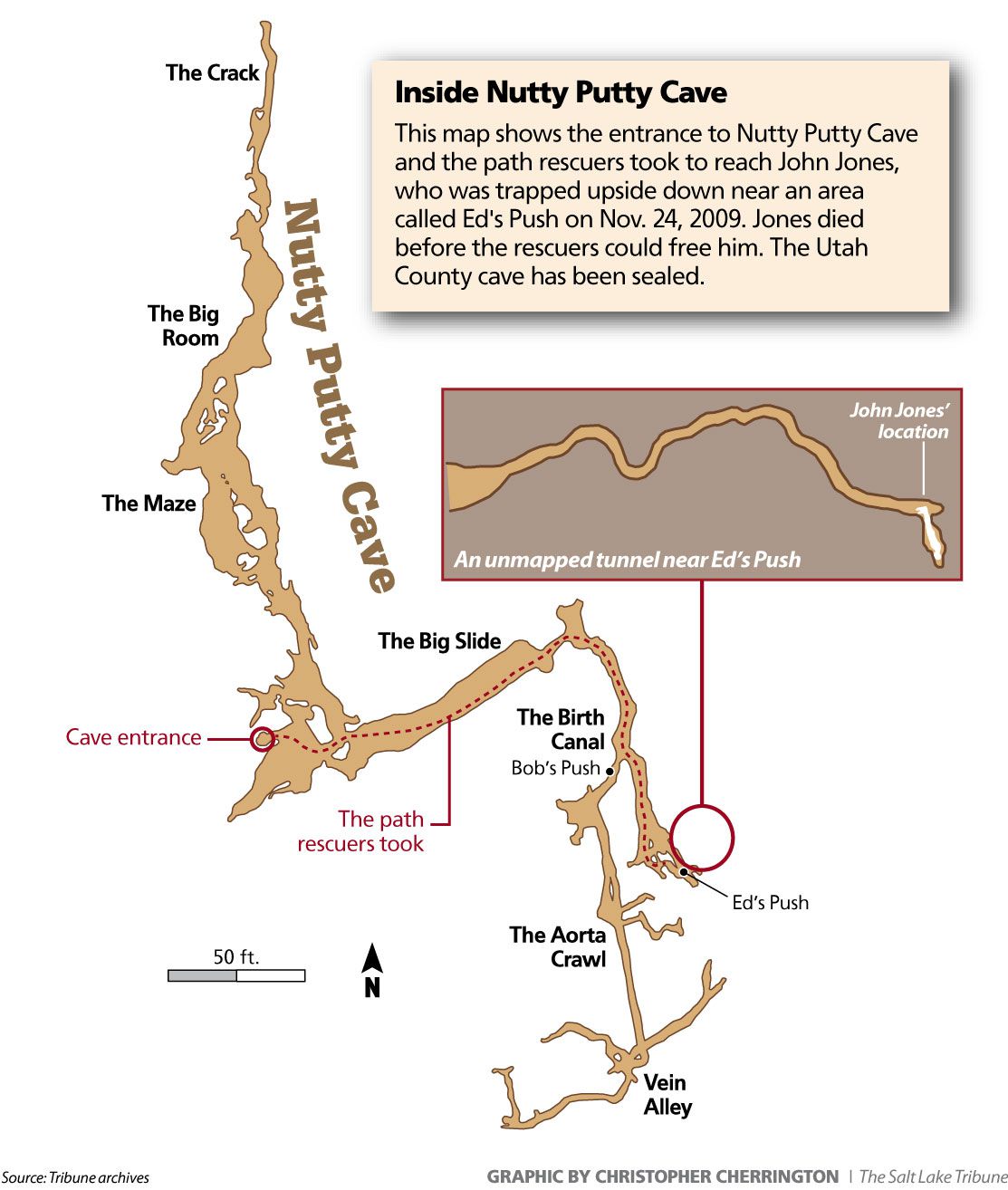
Christopher Cherrington // The Salt Lake Tribune
A tragedy goes viral
Kowallis says he has a knack for quickly processing trauma and has no emotional connection to what happened at Nutty Putty Cave. He doesn’t mind sharing his experience.
“I totally get why people are interested in unusual, crazy, adventurous stories like that,” Kowallis said. “I understand how that can go viral.”
The Nutty Putty tragedy didn’t just go viral, though. It has stayed that way for a decade and a half.
Visitors to Kowallis’ blog are but a fraction of the people rooting around for more insight into John’s nightmare. The internet is rife with videos of people squirming into cave crevices as John may have done and of graphic diagrams depicting how his body was positioned. One YouTube clip posted by Zach D. Films on Oct. 21 featured a 47-second computer-generated reenactment. It drew 4.5 million views in a day. A month later, it has 16 million views and 1.2 million likes.
The feature-length thriller “The Last Descent,” which focuses heavily on Emily and John’s relationship, was released in 2016. In 2017, PBS produced a documentary centered on the rescue workers. The TV series “Fascinating Horror” ran an episode titled “The Nutty Putty Caves” in 2019.
The Jones family doesn’t discourage the interest. Josh said he appreciates that it keeps the memory of his brother alive. And, he understands the draw.
“It was a supremely tragic thing that happened, and it happened on Thanksgiving and it’s, like, the worst case scenario. I think that’s why people might be attracted to it,” he said.
“[But] it doesn’t really bother me. I’m fascinated with stuff like that, too.”
The struggle to move on
Wherever Emily Sanchez goes, there Nutty Putty is.
She has moved four times since her first husband, John, died in that cave in 2009. She remarried and changed her name. She gave birth to two more children. She aged. And yet, people still recognize her. They still, she said, on occasion approach her and tell her, “I know who you are.”
Early on, Sanchez proactively sought out the attention. Six months after John’s death, when she was giving birth to their son, whom she would name John, she talked incessantly about him. She brought his picture to the hospital. It was her way of ensuring he wasn’t forgotten.
For the same reason, when a budding director approached her about making “The Last Descent,” she gave him her blessing. She shared the stories of their courtship and met the actors when she flew out to Utah for the filming.
But when they started reading lines from a script she’d looked over hundreds of times, the typically stoic Sanchez lost it. She excused herself, hid between two cars in the parking lot and just sobbed.
“It was definitely hard to watch,” said Sanchez, who had stayed home with her 1-year-old daughter when the group went to Nutty Putty but went to the cave after the rescue was underway. “I think that even though I was there at the cave … I never saw John suffering. And so to see that depicted on film, it was hard.”
Moving on from identifying as John’s wife has also been hard. Part of the struggle is that some people who know their story don’t want her to move on.
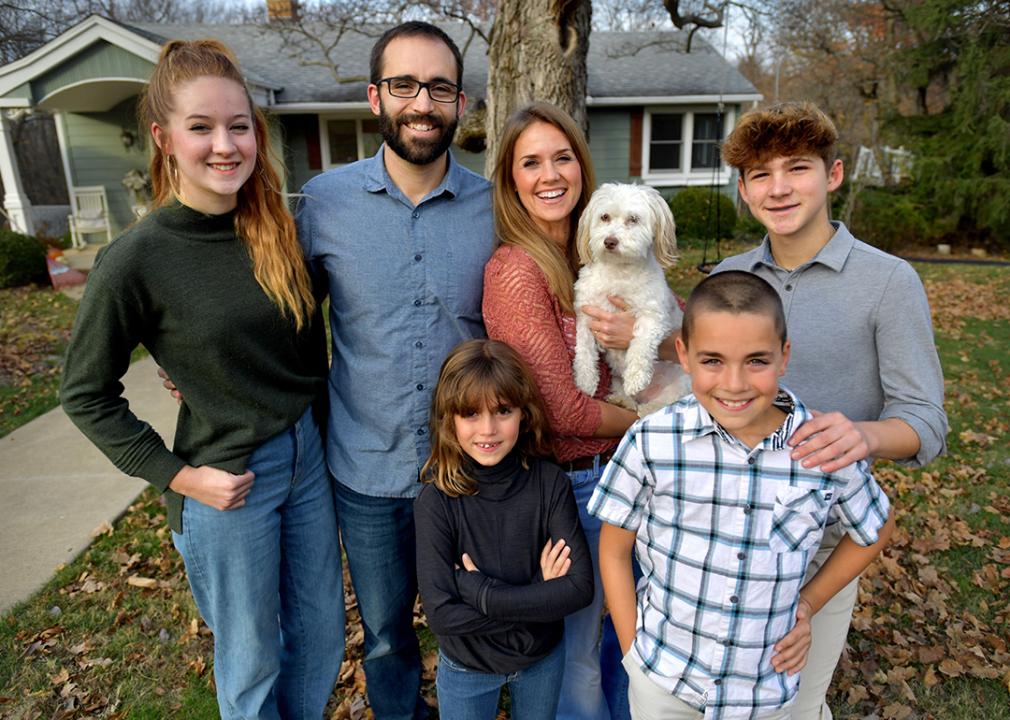
Ron Johnson // Special to The Salt Lake Tribune
Life continues … differently
Three years after John’s death, Emily remarried. Donovan Sanchez, pictured above with Emily and their children, she said, was “a gift from God.” He helped her pick up the shards of her life and drew her out of her stupor of grief. He talks to their two oldest kids about their “Daddy John.” On their fifth anniversary, she posted a photo of the two of them on Facebook.
The backlash, crude and cruel, came in a torrent.
“I got so many hateful comments on that,” Sanchez recalled. “People saw the movie and then they see on Facebook that I’m remarried, and they’re like, ‘This girl doesn’t deserve John.’
“‘This girl doesn’t deserve to live because she got remarried.'”
John’s death isn’t the only obstacle Sanchez has had in life. She, like Josh, underwent a crisis of faith in the LDS church. She’s suffered through five miscarriages, three in the third trimester. And she was diagnosed with ankylosing spondylitis, a type of arthritis that can cause the bones in the spine to fuse together.
“I don’t think I fully appreciated how lonely health issues can be,” Sanchez said. “When John passed away, I was lonely but I also had an outpouring of love, because everybody can imagine how terrible it would be to lose a spouse like that. Everybody can imagine that.”
Finally, though, Sanchez feels as though she is in a place where she can shed that layer of grief. She will always have John in her life—she sees him in their two children and at least once a year they return to Utah to visit his parents. But Nutty Putty doesn’t need to be in her life, too.
“More challenging than the story following me, the bigger challenge is for me to let go of that identity as John’s widow and just be like, I don’t need that attention,” she said. “… I don’t need to tell this story anymore.”
Others will be happy to do that for her. The attention focused on Nutty Putty shows no sign of fading. But as it circulates the internet and in social circles, Sanchez does hope people can step back from the tragic aspects of John’s story and see the bigger picture: Life can be tragic and beautiful at the same time.
After 15 years, Sanchez visits the cave less frequently than she once did. It has changed, too.
The verdant green moss and ferns no longer grow at the mouth of Nutty Putty Cave. In the absence of the cave’s warm, humid exhalations, the hardy broom snakeweed has taken over. Tucked between some of the rocks, though, emerge clusters of white horehound, a delicate, dusty green relative of mint.
It’s still life. Now it’s just a little different.
This story was produced by The Salt Lake Tribune and reviewed and distributed by Stacker.






